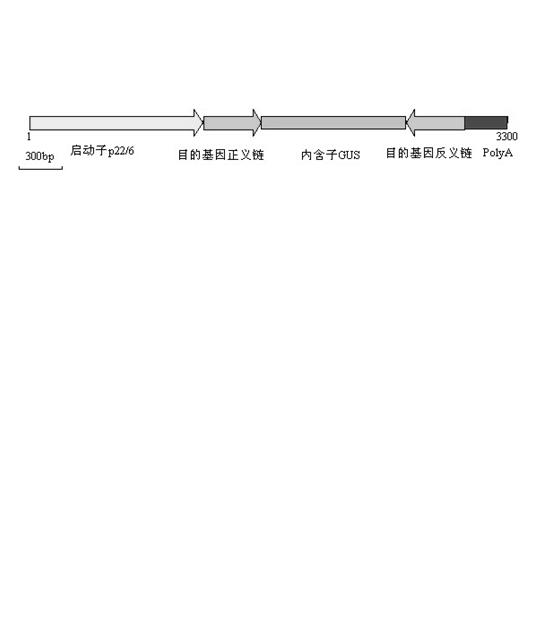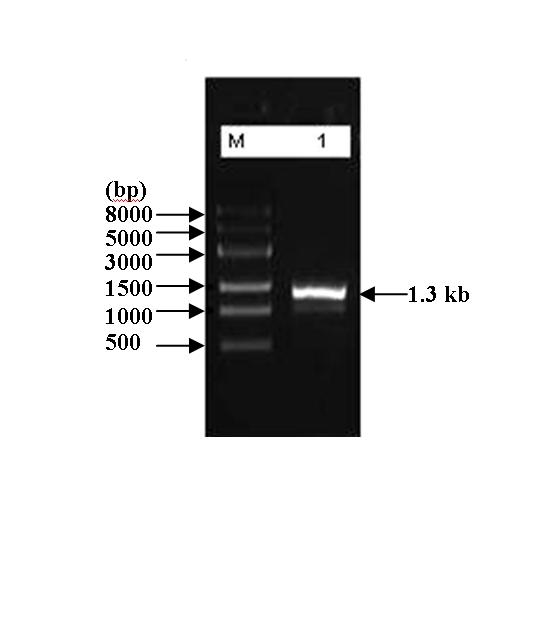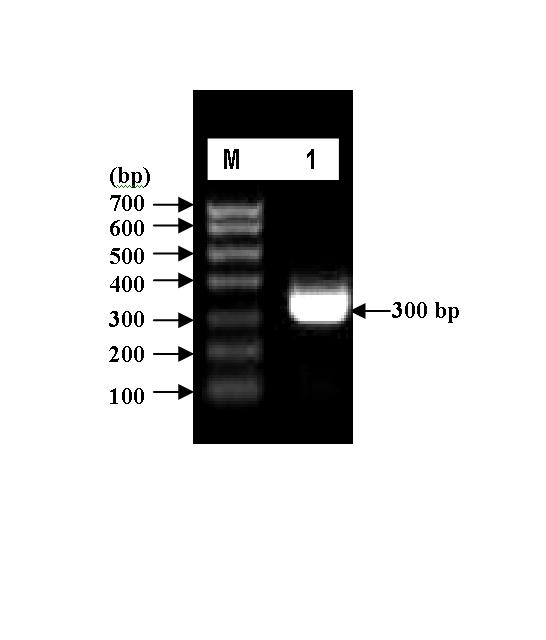Constructing method of zein gene RNAi (Ribonucleic Acid Interference) carrier
A zein and gliadin technology, applied in the field of plant genetic engineering, can solve the problems of poor predictability, long transformation period, low efficiency and the like
- Summary
- Abstract
- Description
- Claims
- Application Information
AI Technical Summary
Problems solved by technology
Method used
Image
Examples
Embodiment 1
[0100] Example 1 Construction of Zein Gene RNAi Vector pUC19-RNAi-22KD
[0101] 1. Test material: corn ( Zea mays L.) The inbred line B73 is a maize germplasm widely used in maize genetic research and breeding practice. Buy.
[0102] 2. Experimental method:
[0103] 1. Extraction of B73 maize genomic DNA:
[0104] 1) Take 300 mg of corn leaves, add liquid nitrogen and grind them thoroughly;
[0105] 2) Add 700 μl 2% CTAB extract preheated at 65°C and mix gently;
[0106] 3) Place in a 65°C water bath for 30-60 minutes;
[0107] 4) Leave at room temperature for 2 minutes, add 300 μl chloroform-isoamyl alcohol (24:1), and shake fully for 1-2 hours;
[0108] 5) Centrifuge at 10,000 rpm for 10 min;
[0109] 6) Take the upper aqueous phase into a new centrifuge tube, add 600 μl isopropanol, and place at room temperature for 10 min;
[0110] 7) Centrifuge at 10,000 rpm for 1 min, discard the supernatant;
[0111] 8) Add 500 μl of 75% ethanol and let stand at room temper...
Embodiment 2
[0216] Example 2, Construction of Zein Gene RNAi Vector pUC19-RNAi-19KD
[0217] The construction of the zein gene RNAi vector pUC19-RNAi-19KD is the same as that of Example 1 except for the following steps, which will not be repeated here.
[0218] 1. The method for obtaining the endosperm-specific expression promoter P-zp22 / 6 is the same as in Example 1.
[0219] 2. Construct the recombinant vector pUC19-p22 / 6 containing the endosperm-specific expression promoter P-zp22 / 6, the method is the same as that of Example 1.
[0220] 3. Acquisition of partial cDNA fragment 19-KD-P of 19-KD gliadin gene
[0221] 1. Design primers for the partial cDNA fragment 19-KD-P of the 19-KD gliadin gene
[0222] Find the mRNA sequence of the 19-KD gene in the database MaizeGDB, and use this mRNA as the motif to find the corresponding 19-KD genomic DNA sequence on Genebank (accession number: AC196717.3). This sequence and the recombinant vector pUC19- For the analysis of multiple cloning si...
Embodiment 3
[0244] Example 3 The application of the zein gene RNAi vector constructed by the method of the present invention in increasing the lysine content of corn varieties
[0245] Applying the zein gene RNAi vector pUC19-RNAi-22KD or pUC19-RNAi-19KD constructed by the present invention to transform maize varieties respectively can greatly increase the lysine content level of the grain, and achieve the purpose of improving the quality of maize.
[0246] 1. Test materials
[0247] corn( Zea mays L.) Hybrid H99×HiⅡB (purchased from Beijing Zhongnong Dakang Technology Development Co., Ltd.). Eighteen days after artificial self-pollination, the ears were sterilized with 70% ethanol, 2.5% sodium hypochlorite and sterilized water in sequence, and young embryos with a length of about 10-1.2 mm were picked under aseptic conditions.
[0248] 2. Culture medium
[0249] The media used for the induction, subculture, biolistic transformation, selection of transformed callus, and differentia...
PUM
 Login to View More
Login to View More Abstract
Description
Claims
Application Information
 Login to View More
Login to View More - R&D
- Intellectual Property
- Life Sciences
- Materials
- Tech Scout
- Unparalleled Data Quality
- Higher Quality Content
- 60% Fewer Hallucinations
Browse by: Latest US Patents, China's latest patents, Technical Efficacy Thesaurus, Application Domain, Technology Topic, Popular Technical Reports.
© 2025 PatSnap. All rights reserved.Legal|Privacy policy|Modern Slavery Act Transparency Statement|Sitemap|About US| Contact US: help@patsnap.com



